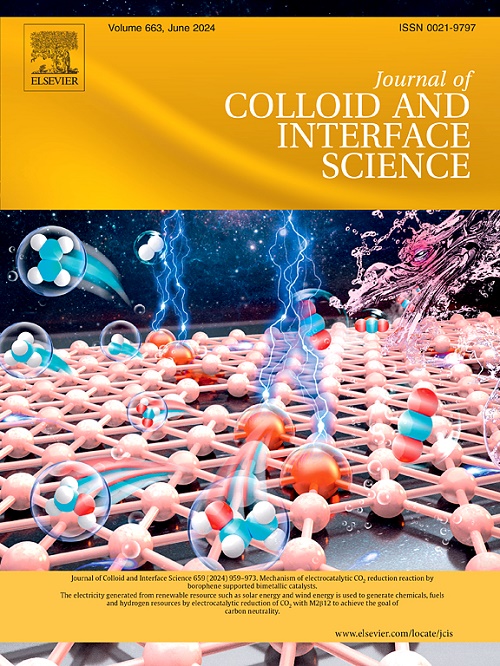Photothermal-assisted photocatalytic peroxydisulfate activation based on core–shell CuBi2O4@Cu2WS4 modulated by interfacial bonding and internal electric field
IF 9.4
1区 化学
Q1 CHEMISTRY, PHYSICAL
引用次数: 0
Abstract
The photothermal effect, interfacial bond and internal electric field can effectively regulate the charge transfer of the heterojunction, improving the photocatalytic activity of the catalyst. Herein, we prepared the 1D/2D core–shell CuBi2O4@Cu2WS4 heterojunction with the photothermal effect of “1 + 1 > 2”, which can effectively degrade tetracycline (TC) and levofloxacin (LVF) through the photothermal synergistic peroxydisulfate (PDS) activation process. Density functional theory (DFT) calculation femtosecond transient (fs-TAS) spectral and temperature control experiment analysis showed that the photothermal effect, S-Cu–O bonding and the internal electric field promoted the transport of photogenerated carriers. Visible light irradiation enables a degradation rate of 81.8 % for TC and 67.6 % for LVF in the photothermal-PDS system using Cu2WS4/CuBi2O4, which is 43.8 % and 26.9 % higher than that at 10℃, respectively. In addition, the vulnerable sites of TC molecules were determined by calculating the Fukui index. The ecological risk of TC degradation products was predicted based on the Ecological Structure Activity Relationships (ECOSAR) model, and the bean sprout cultivation experiment further verified the lower environmental risk of TC degradation products. This study provides a novel and feasible strategy for designing and developing photocatalysts for photothermal synergy PDS advanced oxidation process and organic pollutant degradation.

求助全文
约1分钟内获得全文
求助全文
来源期刊
CiteScore
16.10
自引率
7.10%
发文量
2568
审稿时长
2 months
期刊介绍:
The Journal of Colloid and Interface Science publishes original research findings on the fundamental principles of colloid and interface science, as well as innovative applications in various fields. The criteria for publication include impact, quality, novelty, and originality.
Emphasis:
The journal emphasizes fundamental scientific innovation within the following categories:
A.Colloidal Materials and Nanomaterials
B.Soft Colloidal and Self-Assembly Systems
C.Adsorption, Catalysis, and Electrochemistry
D.Interfacial Processes, Capillarity, and Wetting
E.Biomaterials and Nanomedicine
F.Energy Conversion and Storage, and Environmental Technologies

 求助内容:
求助内容: 应助结果提醒方式:
应助结果提醒方式:


